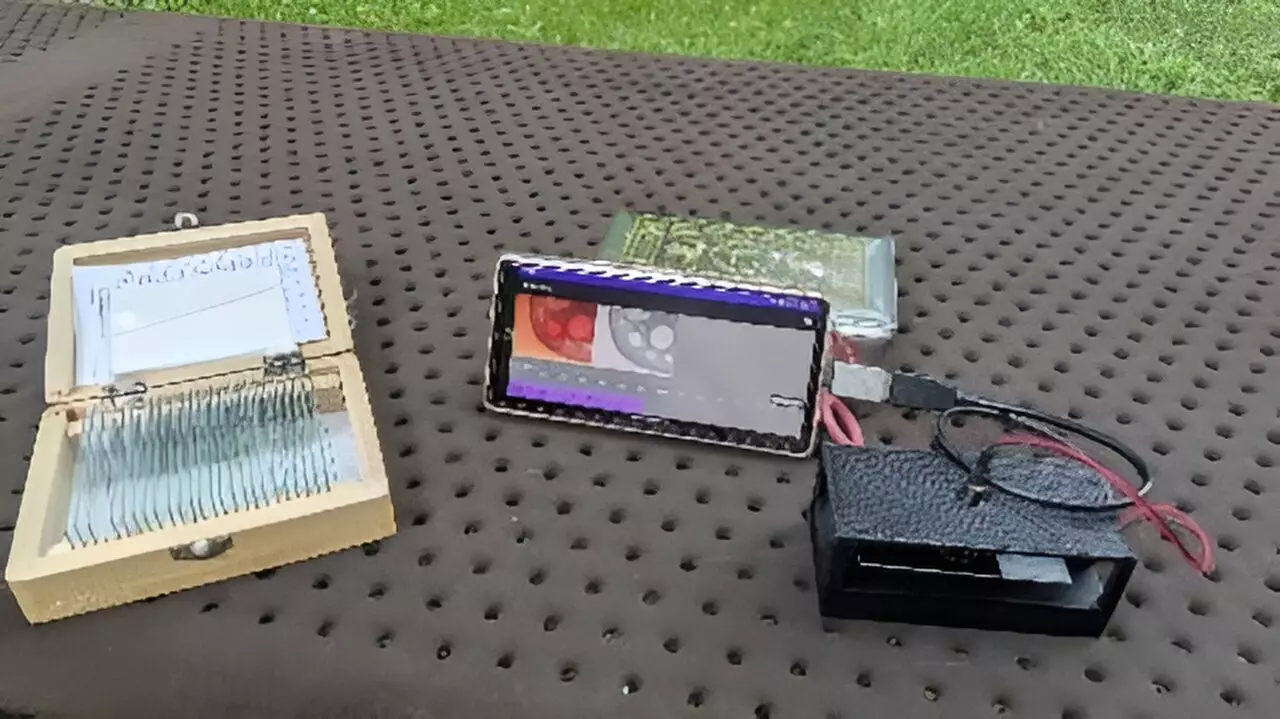In an impressive leap forward for both science and technology, researchers have unveiled a groundbreaking smartphone-based holographic microscope that facilitates precision 3D measurements. This innovative tool promises to democratize the capabilities of advanced microscopy, making sophisticated imaging accessible not only to researchers but also to students and healthcare providers in underserved regions. By marrying cutting-edge optical technology with the ubiquitous smartphone, this development stands poised to revolutionize educational practices and health diagnostics across the globe.
Traditional digital holographic microscopes, while powerful, are often hindered by their bulky setups and requirement of high-end personal computers for data analysis. This impediment limits their utility in settings where space and resources are constrained. The newly developed microscope, spearheaded by Yuki Nagahama from the Tokyo University of Agriculture and Technology, significantly mitigates these issues through a streamlined design that is both affordable and easily transportable. Using a combination of 3D printing and smartphone software, Nagahama’s team has crafted a device that can deliver nearly real-time 3D reconstructions of objects, thus opening up a world of possibilities for practical applications.
Delving Into the Mechanics of Holography
The fundamental operation of holographic microscopy involves capturing the interference patterns created by light interactions. This technique allows for the detailed reconstruction of an object’s surface and internal features, enhancing the precision of measurements derived from the samples. The quick processing capabilities required for real-time image reconstruction have traditionally necessitated powerful computing systems. However, by employing band-limited double-step Fresnel diffraction, the researchers reduced the computational burden on smartphones, allowing rapid processing of lighter data sets.
In prior attempts, smartphone-based holography had limitations, such as the need for external processing units or other devices to reconstruct holograms effectively. The new methodology not only enhances efficiency but also showcases the incredible potential of mobile devices as competent computing systems for complex scientific tasks. Nagahama’s vision of utilizing smartphones stems from his research during his student years, revealing a long-standing interest in the convergence of portable technologies and microscopy.
Visual Interaction and User-Friendly Design
What sets this new digital microscope apart is its user-centric approach. Equipped with a straightforward interface on an Android app, users can interact with holographic visuals directly through touch gestures, such as pinching to zoom. This accessibility transforms the microscopy experience, allowing non-expert users—including students and less experienced technicians—to grasp complex 3D structures with ease.
Moreover, the microscope is lightweight and built with user-friendly features that provide an agile research tool adaptable to various settings. Whether in a classroom, a research field site, or a hospital, this portable device can seamlessly translate sophisticated imaging technology into tangible learning and diagnostic experiences. The implications here are profound; students can engage directly with living specimens, fostering a more interactive and immersive learning environment that can ignite curiosity and scientific inquiry.
Applications in Education and Healthcare
Consider the profound impact this technology could have on education in impoverished regions where access to high-quality scientific tools is often limited. Imagine classrooms where students can explore the microscopic world around them without being tethered to outdated and cumbersome equipment. These microscopic insights could catalyze a new generation’s interest in scientific careers while increasing scientific literacy among youth worldwide.
Furthermore, in healthcare, particularly in resource-limited environments, this digitized method stands to significantly improve point-of-care diagnostics. Conditions like sickle cell disease could be diagnosed with far greater ease, potentially saving lives in regions where traditional laboratory facilities are unavailable. The implications for global health are staggering; early intervention could be more achievable if diagnostic tools are made mobile and accessible.
Looking Ahead: The Future of Holographic Imaging
As the researchers continue to refine and enhance the capabilities of this smartphone microscope, they are proactively tackling one of the persistent challenges faced by digital holography—unwanted artifacts appearing during image reconstruction. By integrating deep learning algorithms into their imagery processing, they aim not only to refine the quality of images produced but also to elevate the overall performance of holographic microscopy.
This intersection of technology and science showcases the relentless pace of innovation spurred by a desire to break barriers and create more inclusive solutions. The future of digital holographic microscopy, especially in a smartphone format, indicates a promising path toward making scientific tools accessible for education, healthcare, and research in any environment. As we forge ahead, the integration of advanced technology into everyday devices will continue to reshape how we perceive and interact with the microscopic world, fostering not just understanding but a collective enthusiasm for science.

